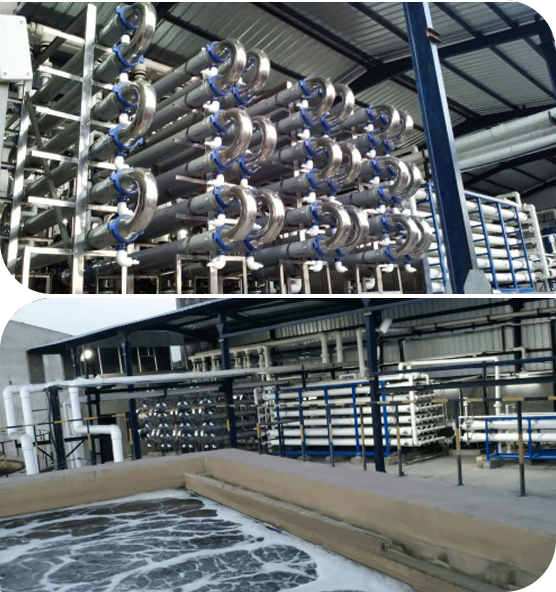
Waterman Engineers Australia is without doubt one of the major suppliers of Zero Liquid Discharge procedure. A ZLD procedure is really a remedy method which happens to be employed to get rid of all of the liquid waste from a process. The goal of ZLD water therapy is to reduce wastewater economically and deliver potable drinking water which is in good shape for ordinary use. Zero discharge process is a sophisticated therapy method that comprises ultrafiltration, reverse osmosis, evaporation and fractional electro deionization. And we've been a properly-identified provider of ZLD programs.
In many Industries, which include electricity, oil & gas, substances, mining and Other individuals, a large amount of wastewater is created that must be managed. Conventionally, this discharge of wastewater is finished by way of a plant outfall to the surface area h2o physique like an evaporation pond, or occasionally deep nicely injected. These tactics bring about lots of environmental considerations by the general public in several regions of the globe, as h2o is actually a scarce supply and its administration ought to be monitored. These worries have resulted in the establishment of ZLD processes by a lot of industries to reduce their environmental footprint and enhance sustainability. And, Waterman Engineers Australia are greatest ZLD suppliers yow will discover for this system.
Qualities OF ZERO LIQUID DISCHARGE Program
The Houses of the Zero Liquid Discharge procedure can vary with regards to the unique design and technologies employed. Even so, some prevalent Houses of ZLD devices involve:
H2o Conservation: Amongst the first aims of ZLD devices will be to conserve water by reducing the discharge of liquid squander to the surroundings.
Large Water Purity: ZLD units are meant to develop substantial-top quality water that may be absolutely free from impurities and contaminants, which makes them suitable for use in several industrial processes.
Flexibility: ZLD techniques tend to be built to accommodate a wide variety of input liquid streams, that makes them versatile and suited to use in numerous industries.
Highly developed Wastewater Treatment method: Zero liquid discharge methods use Highly developed wastewater remedy strategies to get rid of impurities and contaminants from the effluent, making high-good quality h2o.
Waste Reduction: ZLD programs help minimize squander by reducing the volume of liquid waste that should be disposed of and by developing a concentrated, sound waste substance that can be securely disposed of.
Strength Performance: ZLD systems may be Strength-intense due to the higher Vitality necessities of evaporation and other wastewater treatment processes. Nevertheless, developments in technological innovation are building Zero liquid discharge devices extra Electrical power-economical and price-productive.
Waterman Engineers Australia manufactures Zero Liquid Discharge (ZLD) devices built to clear away all liquid waste, aiming to supply potable water and minimize environmental impact. Their ZLD units ordinarily include things like ultrafiltration, reverse osmosis, evaporation, and fractional electro deionization. Essential technologies used are Slipping Film Brine Concentrators, Compelled Circulation Crystallizer, and Some others, by using a two-stage means of pre-focus and evaporation/crystallization to recover and reuse h2o. These techniques are adaptable to various industries, emphasizing h2o conservation, large Zld System Manufacturer Zero Liquid Discharge System h2o purity, waste reduction, and energy effectiveness. Technical requirements are diverse and customizable, considering components like water supply, move fee, and feed h2o top quality.
The necessity for Zero Liquid Discharge (ZLD) methods occurs from the necessity to deal with environmental issues relevant to water scarcity and pollution. In industries like electric power, oil & gas, and mining, large quantities of wastewater are created. Historically, this wastewater is discharged into bodies of drinking water, producing pollution and depleting thoroughly clean drinking water means. ZLD systems goal to reduce these impacts by dealing with and recycling wastewater in just the industrial procedure, therefore conserving drinking water, cutting down squander, and endorsing sustainability.
When considering the technical specs of a Zero Liquid Discharge (ZLD) program, critical features to deal with include the h2o resource it will eventually address, the system's flow rate, the standard of feed h2o, the phases of treatment method included, the recovery price of water, solutions for focus disposal, elements of development, working circumstances, and system automation and control. These things make sure the program's usefulness, longevity, and effectiveness in treating and recycling industrial wastewater.
Zero Liquid Discharge (ZLD) crops present Positive aspects including h2o conservation, waste reduction, and air pollution prevention, contributing to environmental sustainability. They're applicable in industries like energy technology, oil and gas, substances, and mining, the place they help in taking care of industrial wastewater efficiently, lessening the ecological footprint, and complying with rigorous environmental regulations. These devices are vital in spots going through h2o scarcity and for industries aiming to improve their sustainability and operational effectiveness.
FAQs for a Zero Liquid Discharge (ZLD) technique often deal with its operational concepts, Price-performance, maintenance needs, environmental effects, applicability across different industries, and regulatory compliance. These issues help end users have an understanding of the method's Positive aspects, technological requires, and suitability for his or her particular wastewater management wants.
1. Zero Liquid Discharge (ZLD) is often a wastewater procedure procedure created to remove all liquid squander.
2. The technique's parts are motivated by the particular industrial approach, wastewater composition, and regulatory necessities.
three. Effluent cure vegetation clear away pollutants from textile effluents to forestall environmental contamination.
four. Rewards incorporate drinking water conservation, pollution reduction, and regulatory compliance.
five. The intention is to attenuate environmental impression by recycling drinking water and lowering waste.
six-9. Effluent remedy plants are levels in wastewater cure: Principal (Bodily separation), secondary (Organic cure), and tertiary (State-of-the-art treatment method).
10. Device operations include filtration, sedimentation, Organic remedy, and disinfection.
11. Restricting parameters are aspects that impact the procedure's effectiveness, like pH and contaminant concentration.
12. Style criteria include things like movement level, effluent composition, and sought after high quality of addressed drinking water.